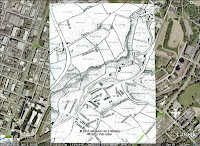old photographs of modernist buildings in Manchester
Manchester Archives are adding their fabulous photographic collection to flickr. Guest 'curators' select thematic groups of pics, such as 'Modernist Manchester'. I love this picture of M & S in the 1960s: http://www.flickr.com/photos/manchesterarchiveplus/6130191250/ I also enjoyed the pictures of the new university buildings, such as this one of the Kilburn Building in 1971: http://www.flickr.com/photos/manchesterarchiveplus/6129643335/in/photostream/ It shows how the old Victoria university kept up with 'building the new universities' (see previous post ). See also this great series of stamps from 1971 showcasing modern universities: http://dirtymodernscoundrel.blogspot.com/2012/01/modern-university-buildings.html On a somewhat tangental note, I also recommend reading Guy Ortolano's article, 'Planning the Urban Future in 1960s Britain', in Historical Journal , 54: 2 (2011). It's a thought-provoking and really well written account...




